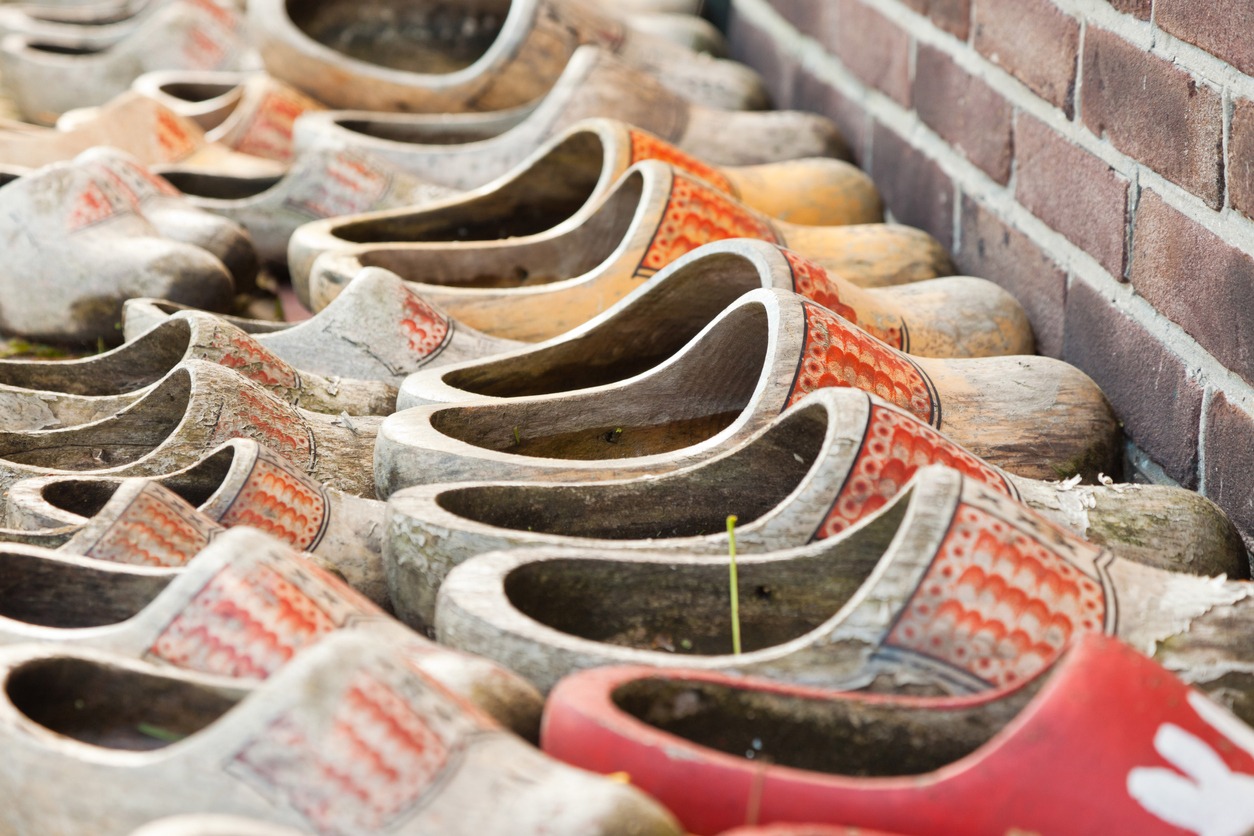Every country and period in history has certain shoe styles that are popular and fashionable. In order to enhance our knowledge, we may get to know the different styles of shoe fashion from a different period or country than our own. Wooden shoes, also known simply as ‘clogs’, are one of them.
What are clogs?
Wooden clogs were originally handmade from wood coming from the trees of the alder, sycamore, poplar or willow variety. This classic footwear was once made with wooden soles and a leather strap. Eventually, the shoe came to be made of wood alone and was worn mainly to protect the feet.
These clogs were originally used as ‘working shoes’ of farmers and miners and have come a long way since then. In fact, they’re now fast becoming a trendy item on the fashion runway. There are actually several variations of the clogs. Overshoes with wooden uppers and wooden soles are the more typical options.
History of Clogs
Though no one knows for sure the true origin of wooden shoes, they were believed to have started during the Middle Ages in Old Europe. The oldest pair was found in Amsterdam and believed to date as far back as 1230. Back in those times, clogs or ‘klompen’, as they were called by the Dutch, were originally made of alder.
The clogs were considered to be a common necessity among farmers and miners, or anyone involved in heavy labor. This was also why people of the nobility and higher classes refused to wear clogs at all, believing them to be peasant shoes.
Varieties of Wooden Clogs
The three varieties of wooden clogs are overshoes, wooden-soled clogs, and wooden upper clogs. Overshoes are simply wooden soles that have straps for tying over other kinds of footwear. These leather straps are known as pattens, though the overshoe style has now been replaced by galoshes for the most part.
Wooden soled clogs use wood for making just the sole. These may have uppers of leather, steel toe caps for extra protection, an open-sandal design, or toe peg styles like the Indian paduka.
Finally, the wooden upper clogs are made from a block or lump of wood. This is hollowed out until the shoe can cover the foot completely. One can also make half-open clogs with this method, where the look is similar to that of a court shoe.
The Making of Traditional Clogs
While fashionable clogs today are made in factories or workshops, the traditional wooden clogs were made by craftsmen who were usually called bodgers. Bodgers made use of several kinds of woods for creating their clogs. However, they also took care to select only those varieties that wouldn’t split easily.
The clogs themselves were carved from square blocks of wood. These blocks were wetted, axed, and smoothed into the familiar clog shape. Then, the resulting shoes were put away in order to allow for complete drying. Finally, the dry shoes were painted with certain patterns and designs. Some villages would have their traditional designs and patterns, hence having unique offerings for everyone in their local area.
Customs Surrounding Wooden Clogs
In the Dutch culture, it was also a customary practice back then for men to present a pair of carved wooden shoes to their fiancées. Soon, these wooden shoes became part of the traditional Dutch costume for ‘Klompendanskunst’ or ‘Clog Dancing’.
In some European countries, they also have their own traditional version of clogs, such as ‘sabot’ in France, ‘klumpe’ in Lithuania, ‘zoccolo (calzatura)’ in Italy, ‘tamanco’ in Portugal, and many others. Varieties of the customary wooden shoes were also used in Asian countries, like the ‘geta’ from Japan, ‘paduka’ from India, ‘namaksin’ from Korea and ‘bakya’ in the Philippines to name a few.
From a Soldier’s Gear to a Decorative Footwear
By the advent of World War I, clogs became part of the combat gear among soldiers as they passed through the vast European terrains. However, the Industrial Age and mass production caused by the invention of machines soon favored leather and synthetic made shoes over clogs. They were soon no longer widely worn and slowly phased out for more durable and protective alternatives. By World War II, wooden clogs were primarily used for traditional decorative purposes.
The Evolution of Clogs as a Fashion Accessory
Fast forward a few decades, and we see that wooden clogs resurfaced by the 1960s. Their main purpose then was as a stylish accessory worn without socks by men. It was the Swedish styled clogs that became popular for both sexes. These were actually made with different materials and colors, retaining only the wooden sole.
By the ’80s and ’90s, the clog became a mainstay in fashion. New materials and accessories were incorporated to make them more comfortable and practical than the ‘old wooden shoe’ variety. Clogs began to incorporate materials such as leather, rubber, fur, wool, or rhinestones with different designs. These ranged from platform styled clogs that may reach 6 to 8 cm high to open-toe or closed back versions with straps or strings.
Every now and then, clogs were also seen on fashion runways as accessories. Even famous designers such as Chanel and Louis Vuitton were instrumental in propelling the clog into the world of fashion.
The Evolution of Clogs in Other Uses
The wooden versions of clogs made a unique clicking noise when someone walked in them. Like tap shoes, the clogs hence became part of a characteristic dance in the Victorian era. It also reached all the way to the United States of America in the 1700s. In fact, sources state that clogs were actually responsible for the invention of modern tap dancing shoes!
Conclusion
While the humble wooden clog may have started out as traditional footwear for the peasant class, it’s now considered fashionable footwear in the twenty-first century. Of course, modern versions of clogs may not contain any kind of wood at all, but they still owe their roots to the original Dutch versions.

